
Make Your Own NDIS Business Plan With This Template
A business plan provides structure and defines business management objectives. It becomes a reference tool to keep your business on track with sales targets and operational milestones. When used properly and consulted regularly, it can help measure and manage your priority areas of focus.
Your work as an NDIS provider will directly impact the lifestyle of 1000s of participants, so you need a proper business plan to ensure a qualitative outlook for them (and profits for you).
If you’re just starting out, or if you’re an established NDIS provider but need to brush up on your strategy, we’ve created a business plan template to kick things off faster.
» DOWNLOAD NOW: The Ultimate Business Plan Template for NDIS Providers [+ Next Steps]
You’ll want to familiarize yourself with the document first and follow the instructions below to customize the template and make it your own both in structure and branding.
Note: The information provided is also useful on its own, you don’t have to download the file if you want to create a document from scratch with the best practices highlighted below.
Getting Started with Your NDIS Business Plan Template
The first thing you will see when first downloading your business plan is a set of instructions to get started with your template and apply the unique information of your NDIS business.
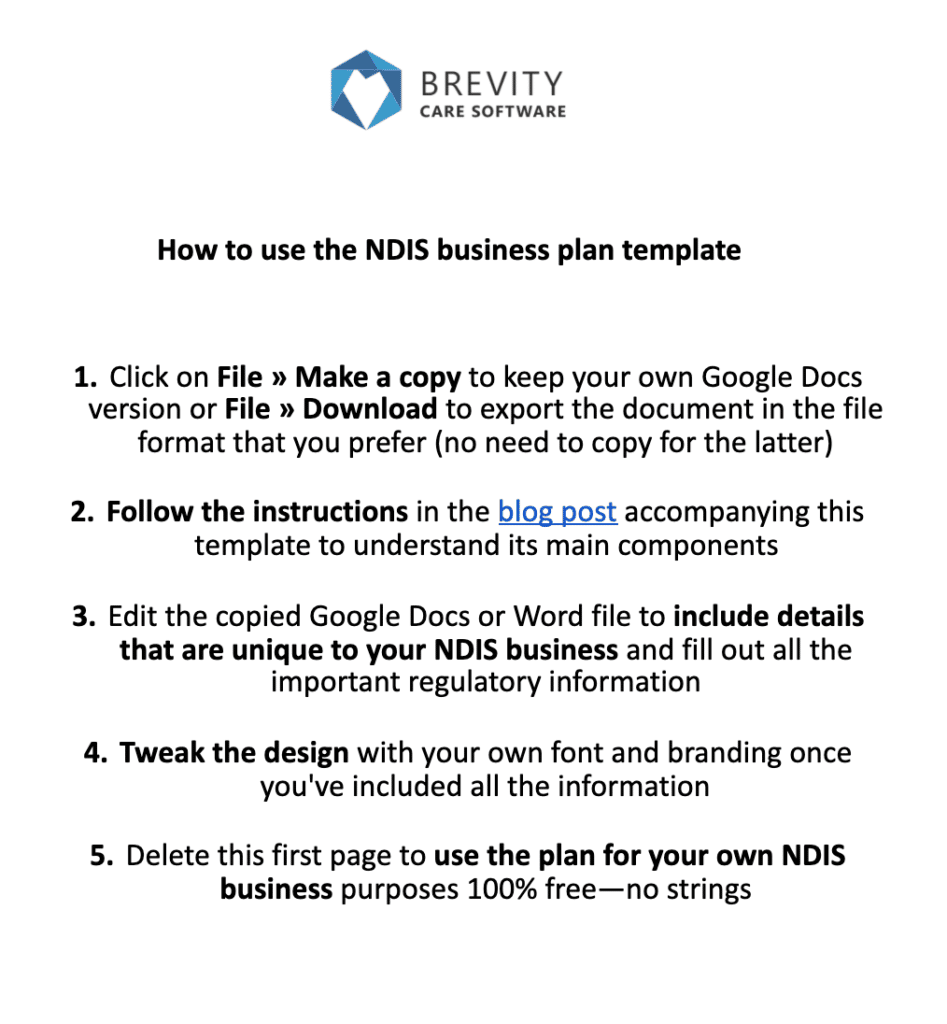
We recommend to make a copy of the file to keep for reference. Then, you can start implementing some of the major changes necessary to have it operational.
The business plan is only 13 pages long, so fairly short compared to some more detailed documents. However, it must be expanded with your own information.
A good number to shoot for once complete is ~18-20 pages. The first thing you’ll want to add is your brand name, logo, name of representative and date of preparation.
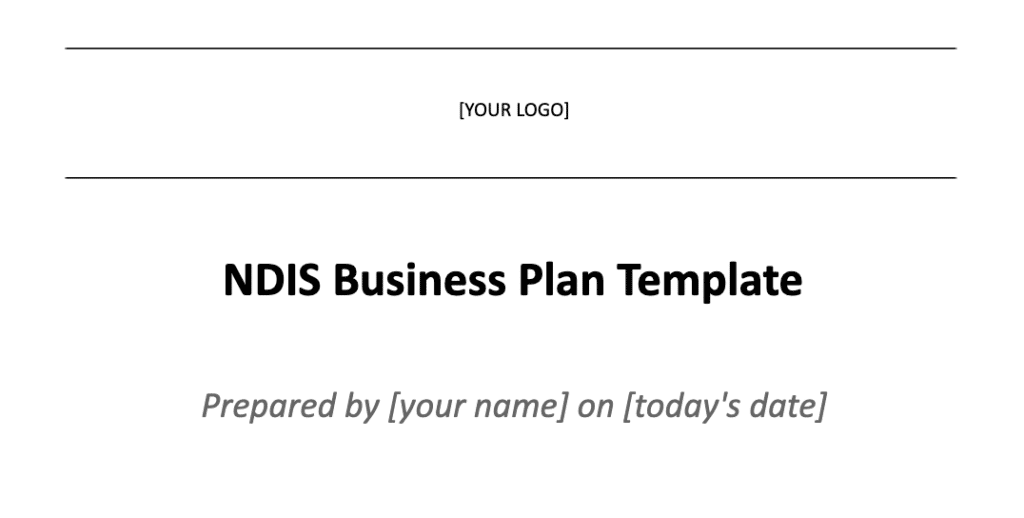
Then, you can move on to the 3rd page where you will see an extremely important section of your business plan: the executive summary and business objectives.
For now, skip the executive summary.
You’ll come back to it towards the end of your journey writing the business plan. Instead, think clearly about what business objectives you care about most, and whether they fit in with your overall vision for the company going forward.
You’ll want to use the OKR framework for this, Objectives & Key Results:
- An Objective is what you want to achieve, a broad goal for the long-term
- A Key Result is a metric by which you will measure progress towards an objective
For each objective that you set in the 3rd page of your business plan, you can set multiple key results.
For example, an objective could be:
“Help 1000 people with limited mobility in my local area become more independent.”
… and 1 of 3 key results to measure progress towards that goal could be:
“Increase targeted traffic to our website by 5000 in 6 months.”
Think of an objective as a long-term goal, one that sits very close to the original vision of your business being founded. Key results are the shorter-term, one-step-at-a-time goals.
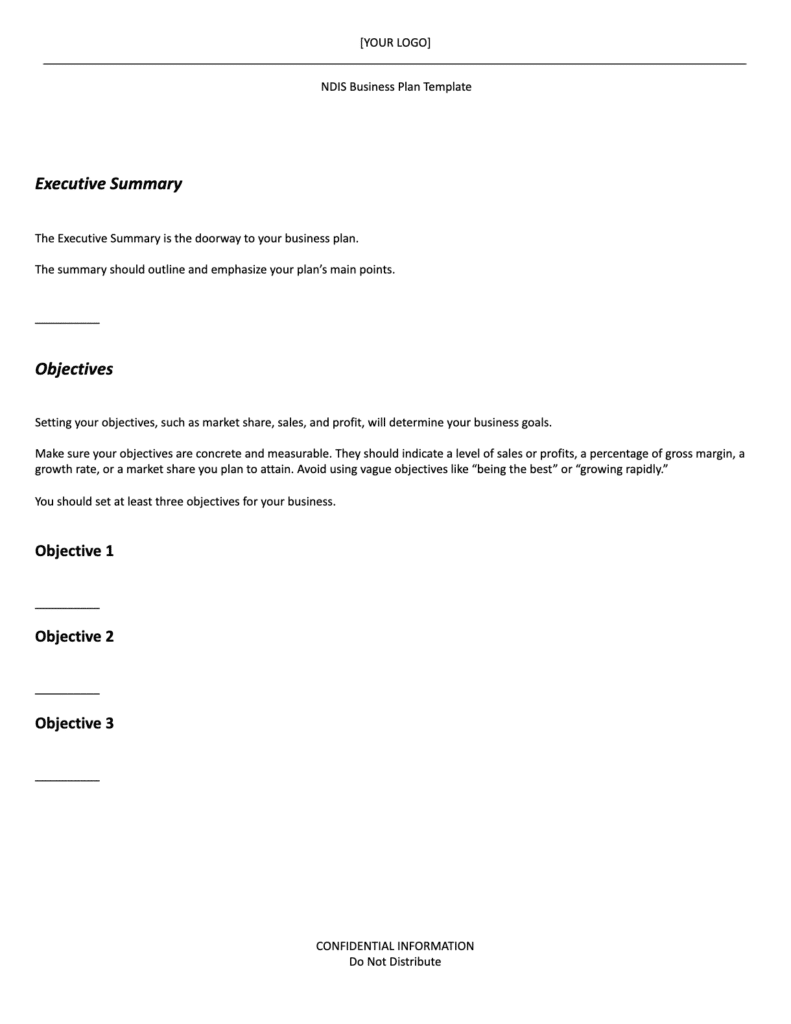
Once you’ve filled out the 3 objectives, it’s time to move forward to a new section where you’ll talk about your company organization, mission, and more.
Adding Your NDIS Business Information To Your Plan Template
As an NDIS provider, you’re in the unique position to serve 1000s of participants in your area (or even remotely!) with backup from the government, IF you can stick to regulations. That’s where filling out your company info accurately comes in handy.
For this section of your plan, you’ll do just that:
- Define your mission statement
- Add company ownership information
- Talk about the history of the business
- Introduce location and facilities
This section is all about you so don’t worry about putting yourself in the customer’s shoes and explain what the company feels like from your (and your team’s) perspective.
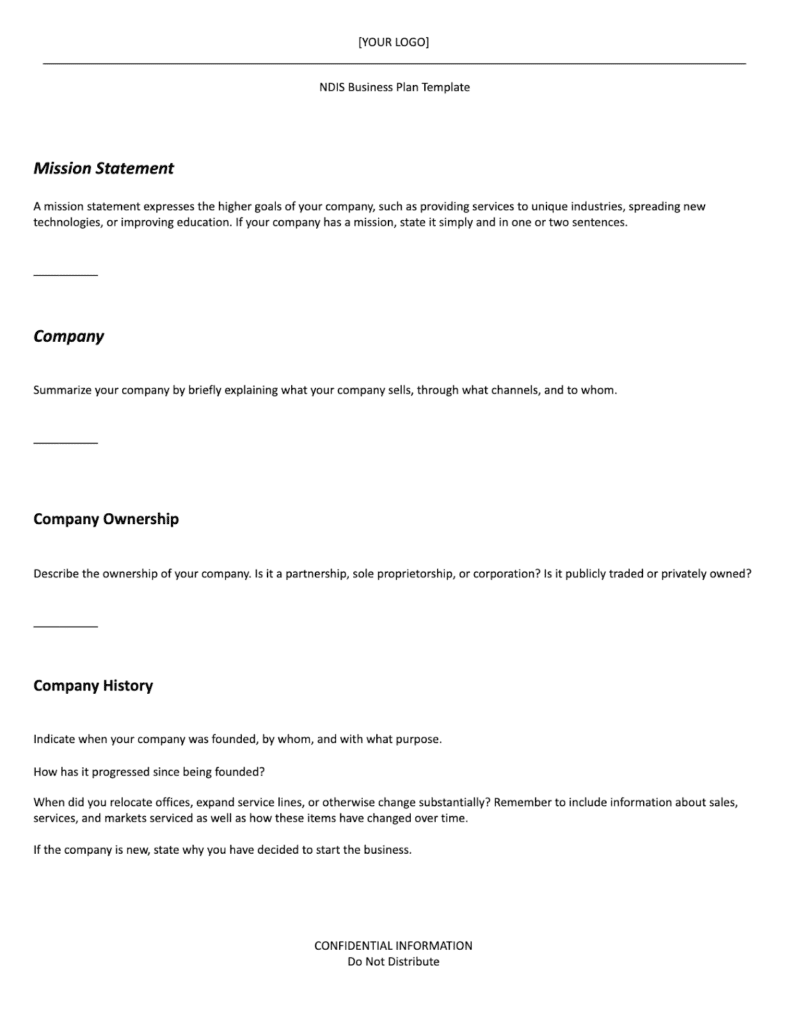
For each entry, you have additional instructions provided within the template itself so don’t be afraid to gather inspiration from other business plans based on what’s required.
Talking About NDIS Supports in Your Business Plan
Supports are the most important unit in the National Disability Insurance Scheme, and you need to talk about them extensively in your business plan to convince an auditor that you’re willing to invest in participants’ well-being for specific types of treatments your team has experience in.
If you don’t have experience in some supports but would like to start offering a service anyway, you need to provide proof of how you’re going to deliver a quality service to participants.
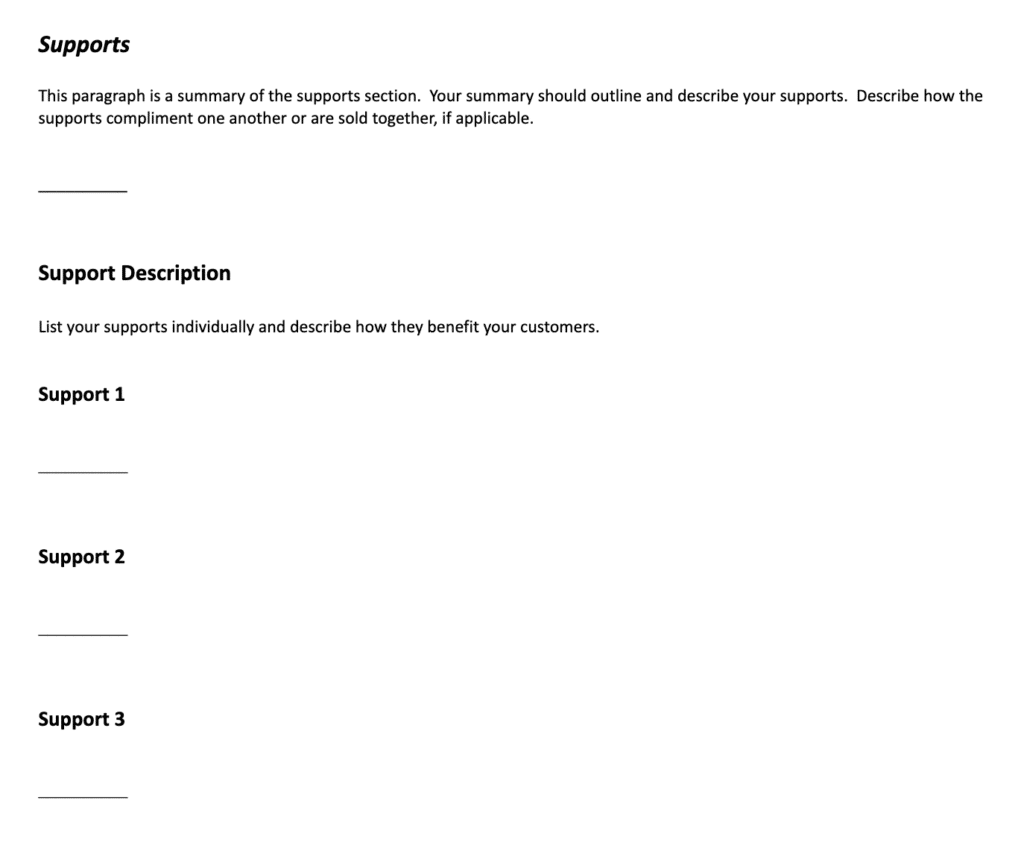
The supports section is pretty straightforward; you can expand it to as many supports as you offer or bundle them together in support categories with their respective numbers.
But it doesn’t end there, you also want to describe how you are going to deliver your supports and whether you have any competitive advantages against other providers.
While all NDIS businesses need to meet a certain service quality threshold throughout all the supports they offer, some will be more capable in delivering them due to more advanced technologies, more experienced staff, or continuous internal training.
If some of these apply to you, you want to highlight them.

Wrap the section up with a description of your follow-up service. How are you going to help NDIS participants achieve their plan goals even after they’ve received your support?
Conducting Thorough NDIS Market Analysis
The problem with doing market analysis is that it’s sometimes hard to find the information you need to understand where to go in the next 1-3 years, or even 3-5 years.
A lot of traditional business plans are built on the idea that you can plan ahead for at least 3 years but that’s unrealistic. Fortunately though, Brevity can help with that.
We’ve built a custom NDIS statistics dashboard that you can reference and browse at any time using password “Brevity.” It’s an interactive map with plenty of information.
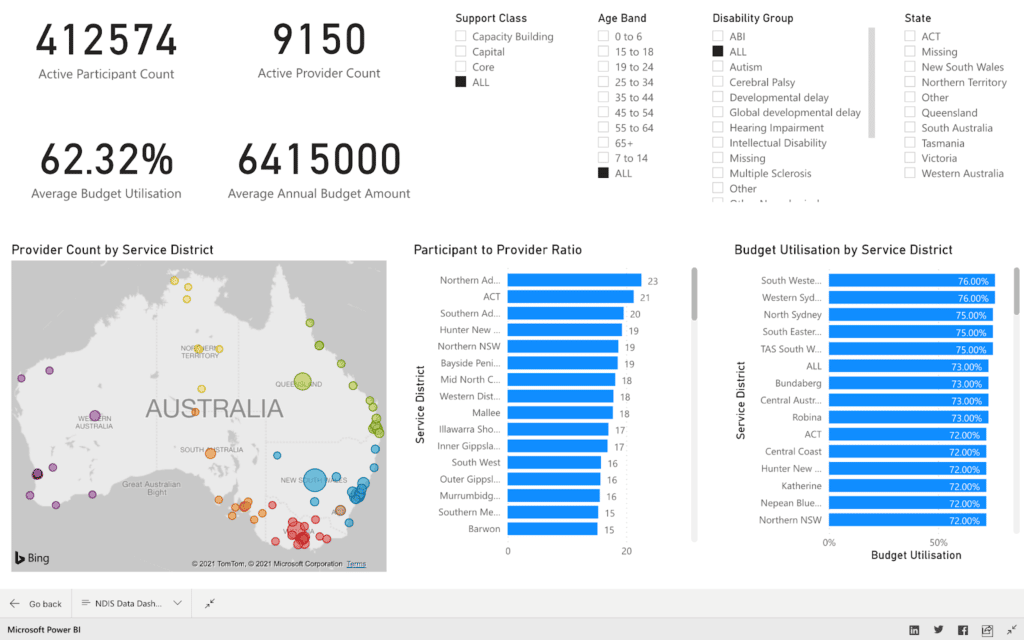
This will give you the right input to understand what the participant landscape looks like across Australia and whether there are any market opportunities for you to seize.
Once you’ve played around with the map, you can go back to your business plan template and start thinking about how that will translate into keys to business success.
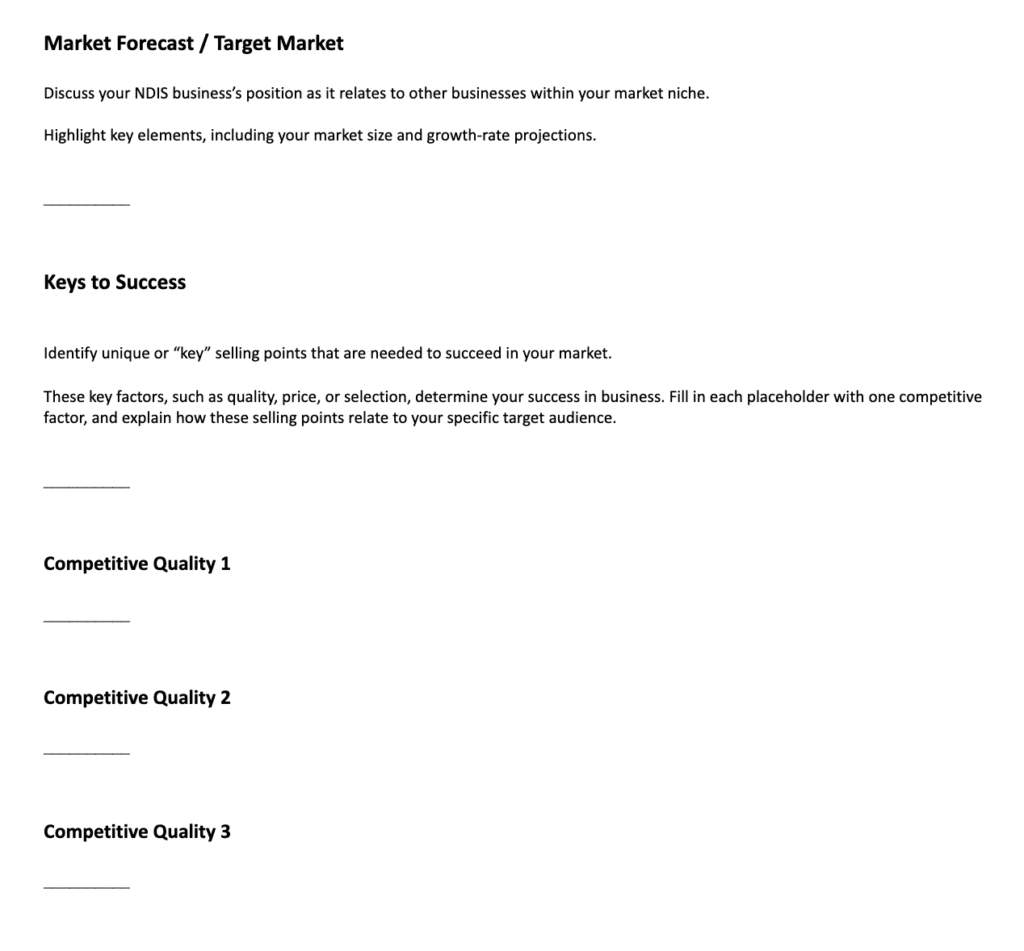
This is an important part of your business plan as it shows the value of your services in an increasingly-crowded space, so we encourage you to spend some time on it.
Describing Your Marketing & Sales Operations
A business cannot possibly grow without marketing and sales, whether funded by the government or self-funded. So you need to have a proper description of both.
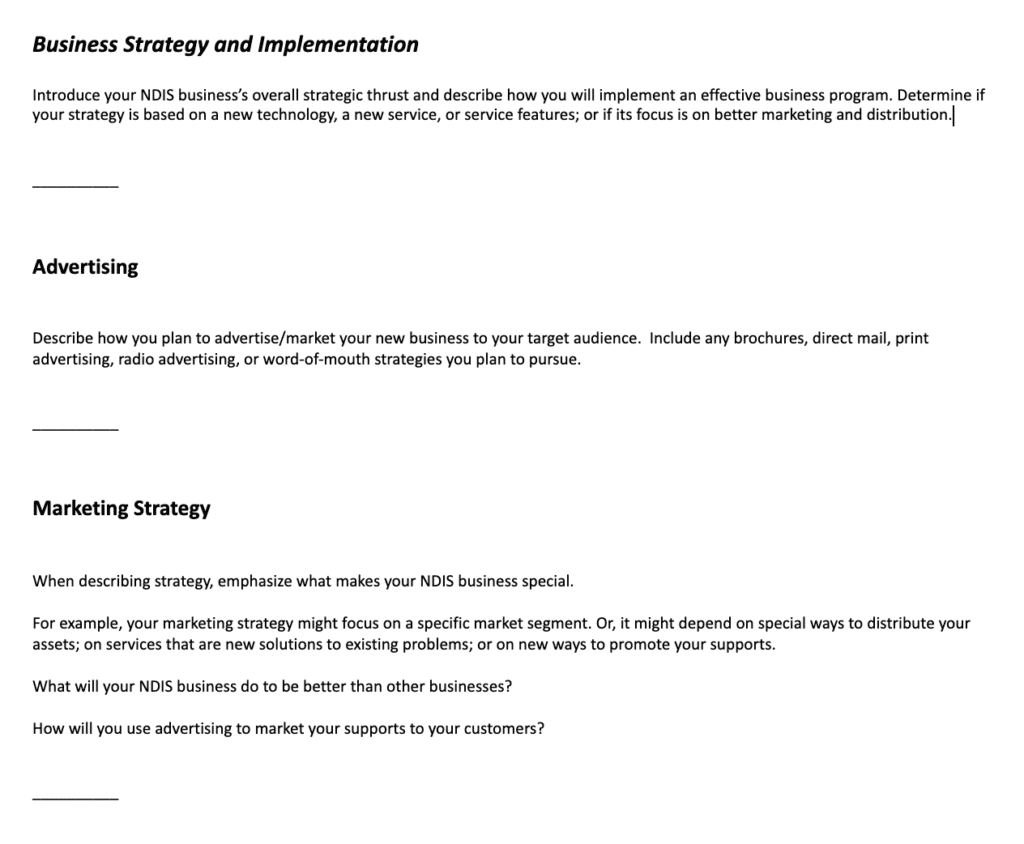
Within the marketing section, you’ll want to describe how you’re planning to attract the attention of NDIS participants who can benefit the most from your services.
Then you’ll want to move ahead and explain how you’re going to sell your services to participants coming down your marketing funnel without overpromising.
It’s crucial that you explain whose responsibility it is for both marketing and sales to work since auditors and investors will care about the ability of your team to deliver.
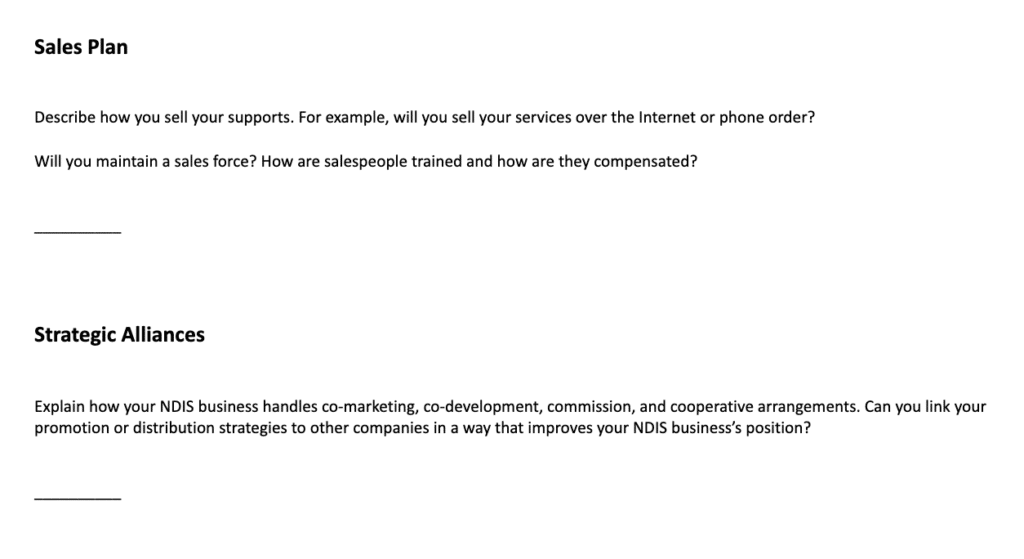
Highlighting Your Organizational Structure & Team
Towards the end of the template, you’ll have the chance to talk about who’s behind the company and the people who are going to be responsible for its success.
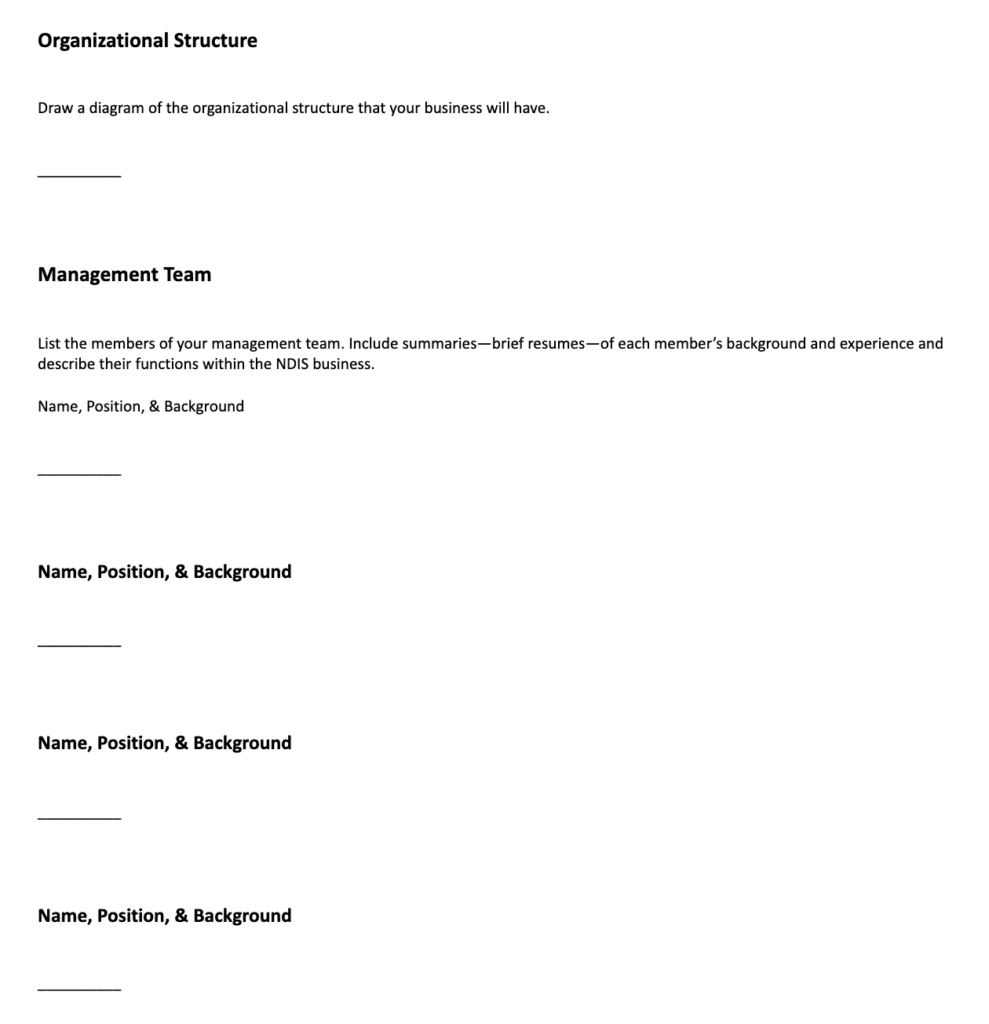
You’ll also want to identify gaps in the skillset of your current team and whether you can make up for those with external hires or by training internally.
Be honest here, there’s no reason to lie.
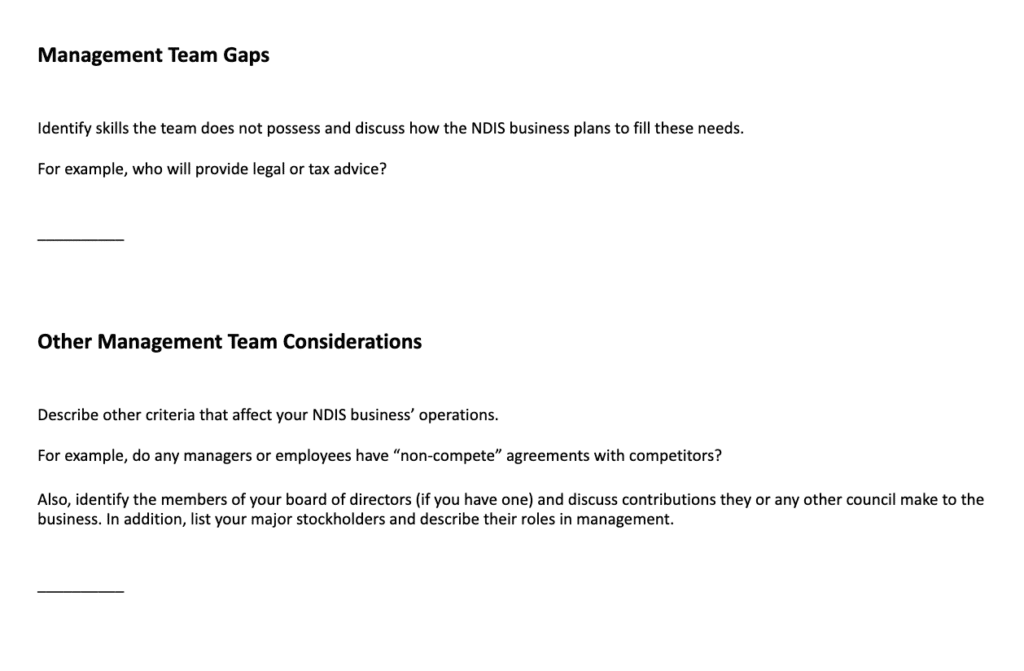
Running Your NDIS Business’ Numbers
Finally, and perhaps most importantly (and, to some, annoyingly), you’ll have to run the numbers on your business.
This means pulling out the income statement from last year (if you have one) and try to predict what the financial situation of the business will be like in 1-3 years.
We won’t go into detail about financial advice as there are too many variables to account for but it’s important for you to be accurate in this section.
If you don’t know how to handle financial information, consider hiring an accountant to fill out the section on your behalf.
(If you need it, we also have a handy NDIS invoice template!)
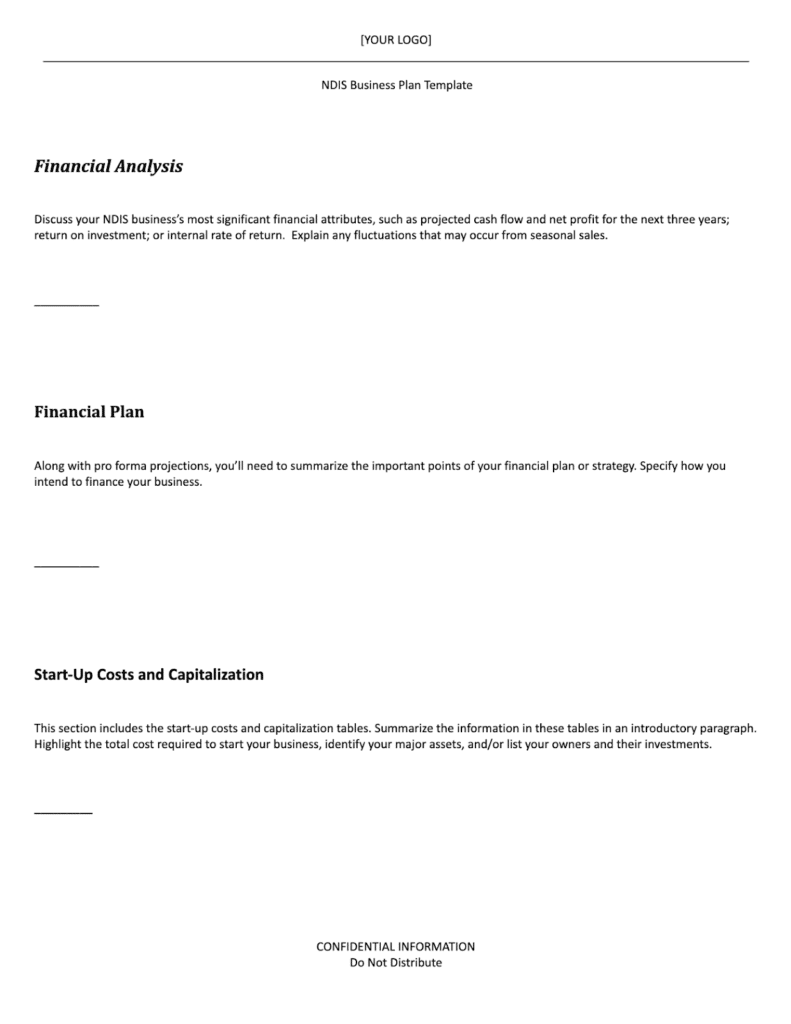
The inline instructions within the template will help you determine what information to include and whether you need additional help to complete your NDIS business plan.
A Good Business Plan Means a Better Service for Participants

With so much at stake in your business relationships, it’s important to give participants a safe feeling of friendliness, organization, and overall preparedness.
That’s what a properly implemented business plan helps you achieve. Starting on the right foot means making it easy for the participant to see the value in your services and even recommending them to other people with special needs around them.
The template provided in this article should help you strike the right tone towards providing a better service for your customers while maintaining clarity internally.
» DOWNLOAD NOW: The Ultimate Business Plan Template for NDIS Providers [+ Next Steps]
Updated guide Originally published Apr 20 2022
Frequently asked questions
To start your NDIS business, you need to apply with the NDIS commission, conduct a self-assessment based on their guidelines, select an approved auditor, undergo the audit based on the size of your organization, and finally receive the outcome of their audit.
Yes, the NDIS is a profitable venture but you shouldn’t think about it purely for monetary gain. It is against the NDIS Code of Conduct to start an NDIS business just because you want to make money out of it as the lives of 100s of thousands of special needs people depend on the scheme. NDIS providers are well-retributed for their work depending on the supports they provide and the experience level of the team.
One of the best places to find participants and connect with them is through Facebook, or, if you’re feeling more proactive, via Google. On the former, you can connect directly with self-managed participants or their family members in your local area. With the latter, you can provide educational content that caters to family members.



